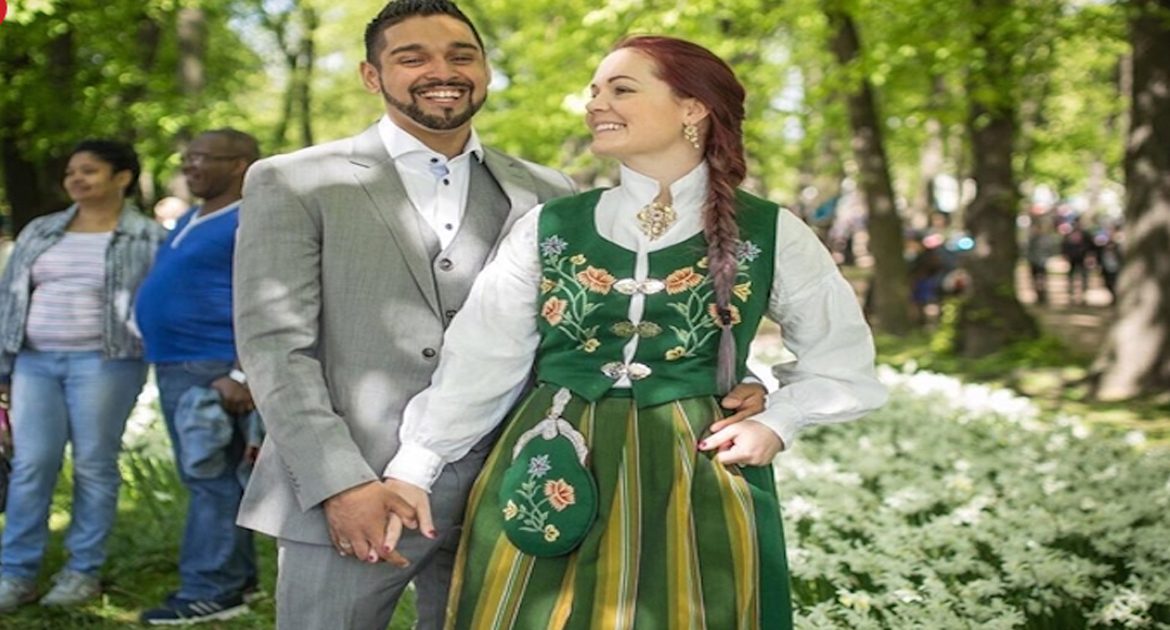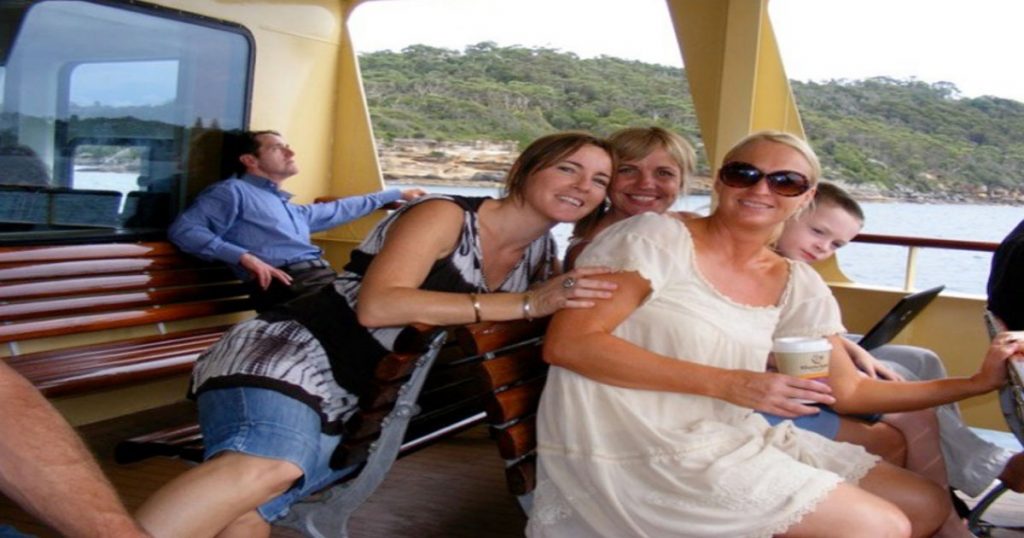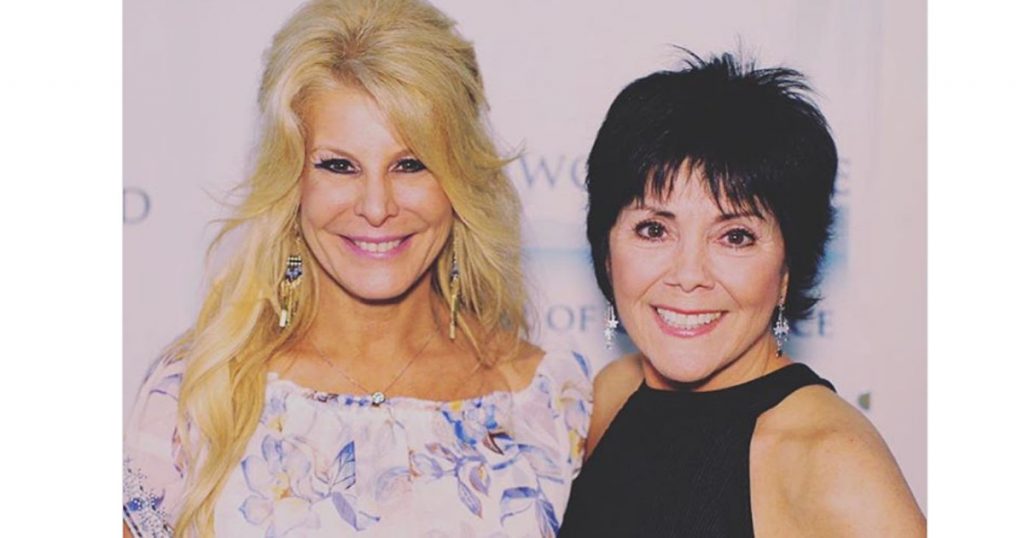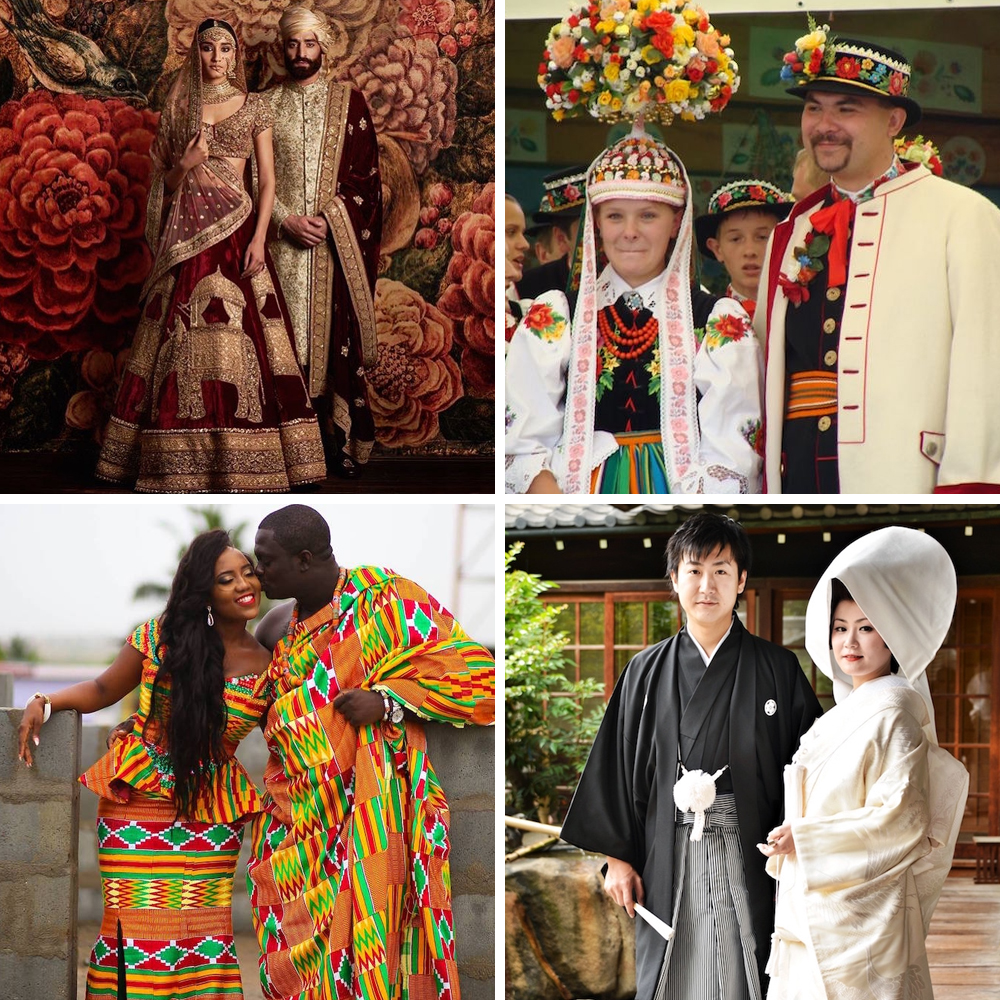
Today, many people think that weddings strictly feature grooms in tuxedos and brides “all dressed in white.” While there’s nothing wrong with a nice suit or ivory gown, not all betrothed couples go this route. In fact, in countless cultures around the world, traditional wedding outfits look much different than our contemporary, western concept of what the ceremonial garments should look like.
Though many women around the world do choose a white dress and you will often see men in tuxes, traditionally, wedding clothing has looked much different throughout history and across the globe. In India, women often wear crimson-colored saris. Some Ghanaian couples opt for bright colors and bold patterns. And Scottish grooms typically wear kilts, while Japanese men don kimonos!
In this collection of traditional wedding outfits, you will see the myriad of ways that different groups of people celebrate matrimony through their clothing choices. Of course, within each country exist many different subcultures and traditions. Thus, these examples simply serve as a fascinating way to explore different approaches to wedding fashion.
India
 In India, brides usually wear red, which represents the rising sun and Mars—the planet associated with marriage. Such symbols are thought to bring fertility and prosperity.
In India, brides usually wear red, which represents the rising sun and Mars—the planet associated with marriage. Such symbols are thought to bring fertility and prosperity.
Japan
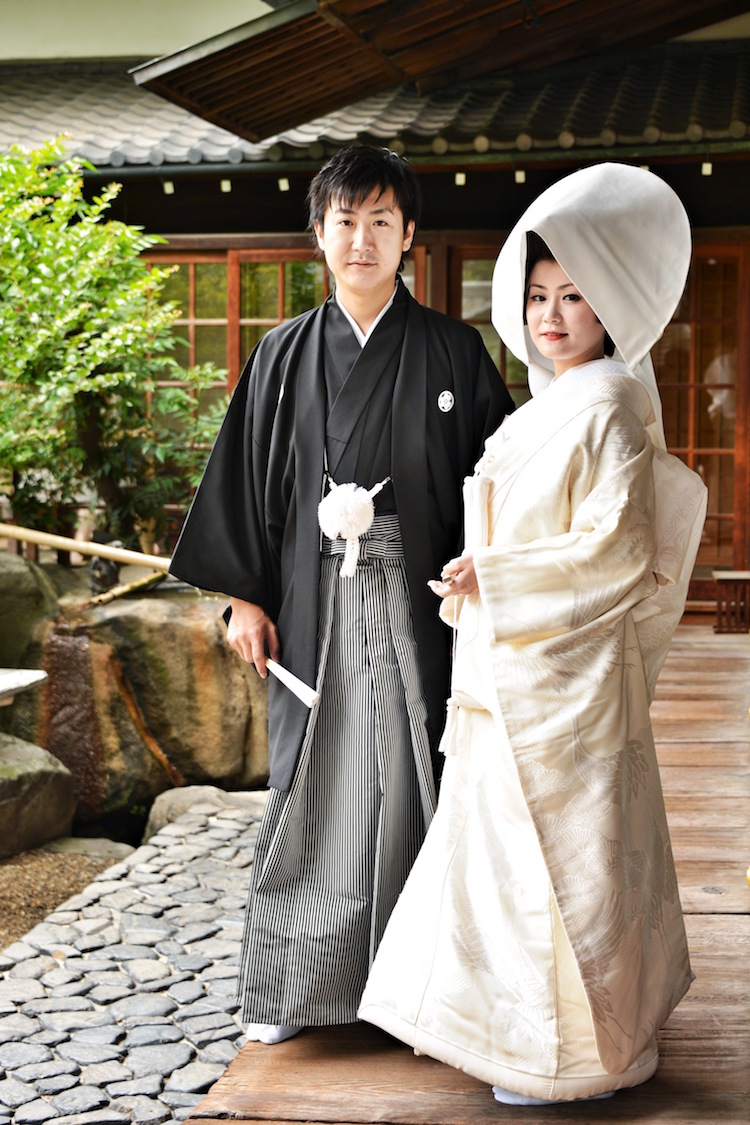
During a traditional Japanese ceremony, the bride will usually wear a white kimono called uchikake. The groom also wears a kimono, as well as hakama, a type of pleated trouser, and haori, which is similar to a jacket.
Ghana
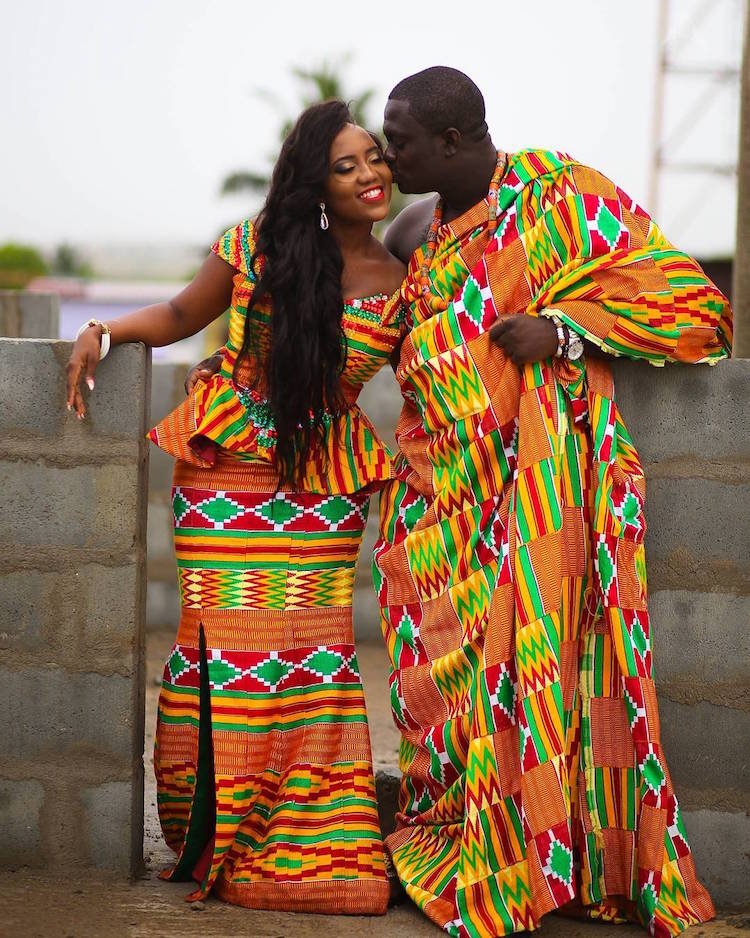
Ghanaian couples often wear matching ceremonial attire. Made of kente (a type of cloth handwoven in Ghana), the outfits feature bright and colorful patterns and designs.
Indonesia
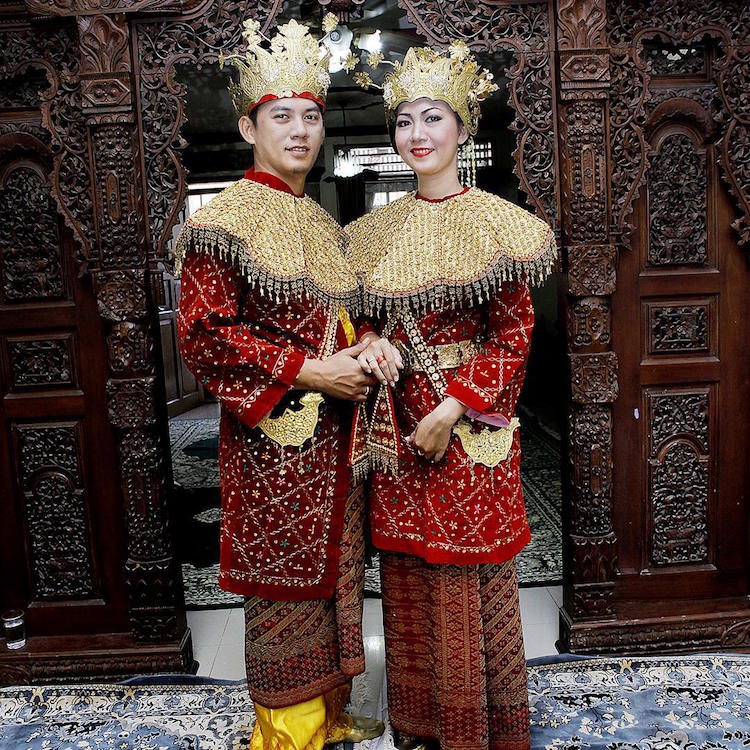
For traditional wedding ceremonies in Jakarta, Indonesian brides and grooms tend to cover themselves in gold and sparkling jewels for a very regal look. The idea is to emulate kings and queens.
Poland
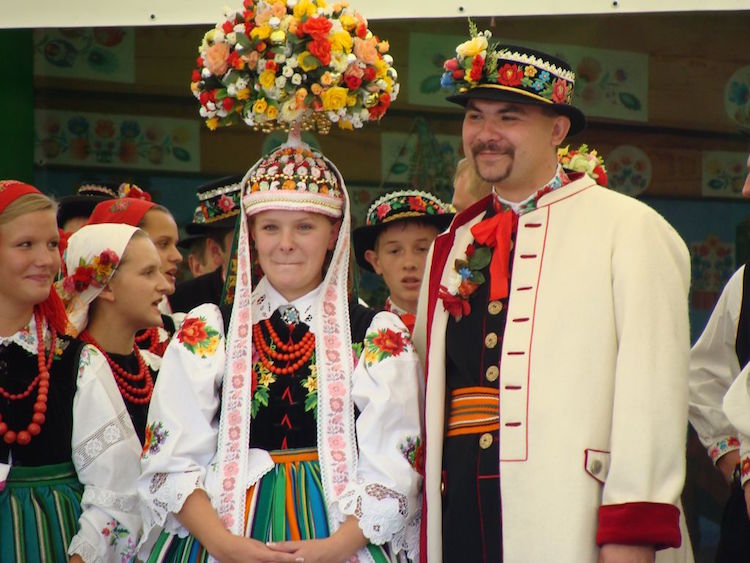
In Łowicz, a town in central Poland, traditional bridal outfits include a special veil/cap that has its own ceremony (called “oczepiny”) during the wedding.
China

At traditional Chinese weddings, brides and grooms often opt for red outfits, as the culturally lucky color represents love and prosperity.
Portugal

Portuguese brides traditionally wear a tunic adorned with filigree jewelry. Grooms normally wear a dark suit, white shirt, and hat.
Estonia

Many wives-to-be in Estonia have a history of wearing head-wreaths paired with colorful folk dresses.
Peru

At Peruvian weddings, color is king. Women wear bright polleras (handwoven skirts) and men wear headdresses. Both the bride and groom may also wear cloaks or ponchos.
Sri Lanka

A Sri Lankan bride will wear a sari and a Nalapata headpiece. The groom will wear a 4-cornered hat, a velvet jacket, and a mul anduma, a long, white cloth wrapped around his waist.
Hawaii

Both brides and grooms in Hawaii wear colorful leis around their necks. Additionally, wives-to-be usually wear long, white dresses, while grooms typically wear loose white shirts and matching slacks.
Scotland
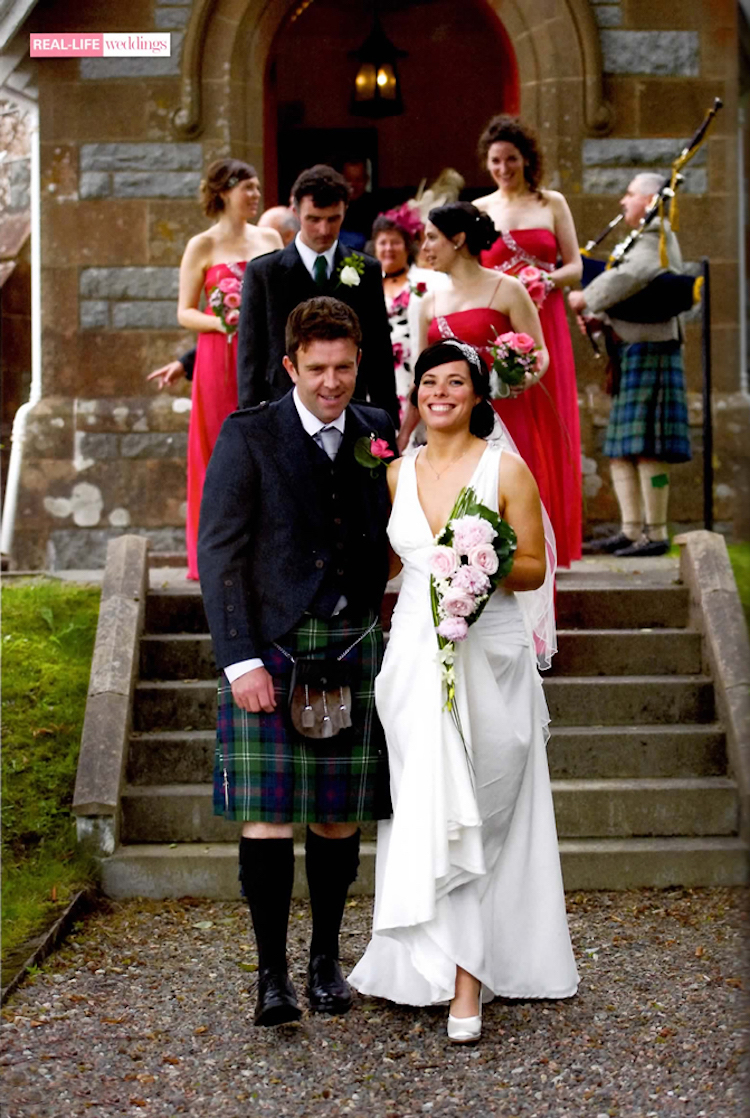
In Scotland, a groom will customarily wear a kilt, topped with a jacket, shirt, and tie. To make up for his lack of pockets, he’ll also sport a sporran, or pouch.
Nigeria

In Nigeria, brides and grooms often wear color-coordinated wedding outfits. A traditional bride will wear a gele wrapped around her head, while a groom will sport a fila abeti aja, or a “dog-eared” cloth cap.
Greece (Orthodox)

At Orthodox Greek weddings, the presiding priest places crowns (called stefana) on the heads of the bride and groom. The stefana are often joined by a ribbon, representing the unity between the newly wed couple.
Sardinia
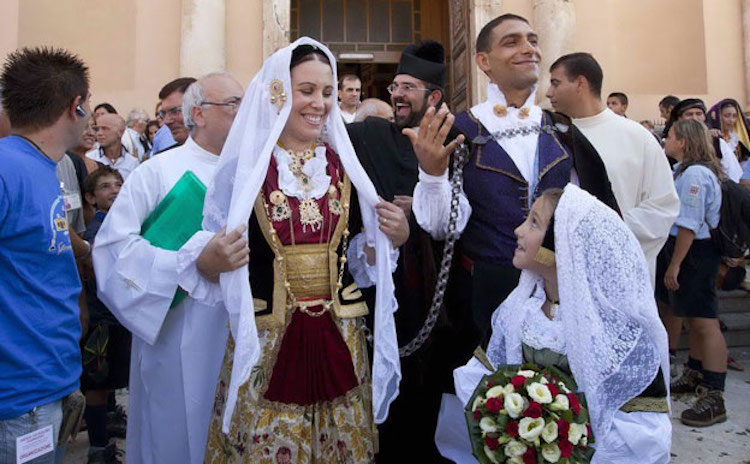
In Sardinia, a bride seeking to emulate traditional folk dress will wear an elaborate dress, velvet jacket, and a long veil.
South Korea

In South Korea, couples wear traditional outfits referred to as hanbok. The bride’s hanbok includes a wrap-around skirt and a short jacket with long sleeves (known as a “chima-jeogori”). The groom’s hanbok is composed of a short jacket (“durumagi”) and roomy pants (“baji”).
Norway
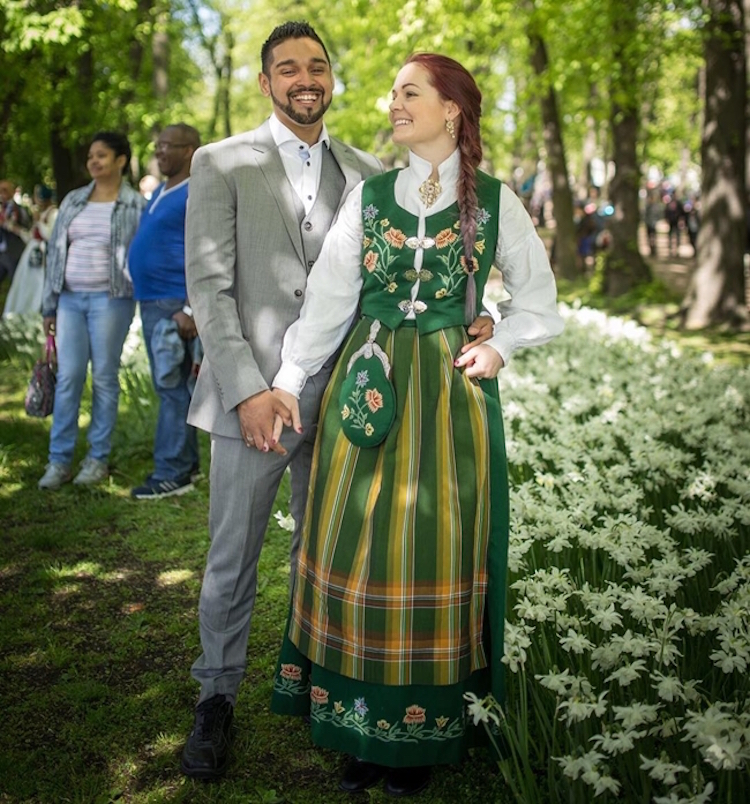
Though many brides in Norway opt for modern, white wedding dresses, many still wear bunads, or traditional folk dresses.
Kosovo
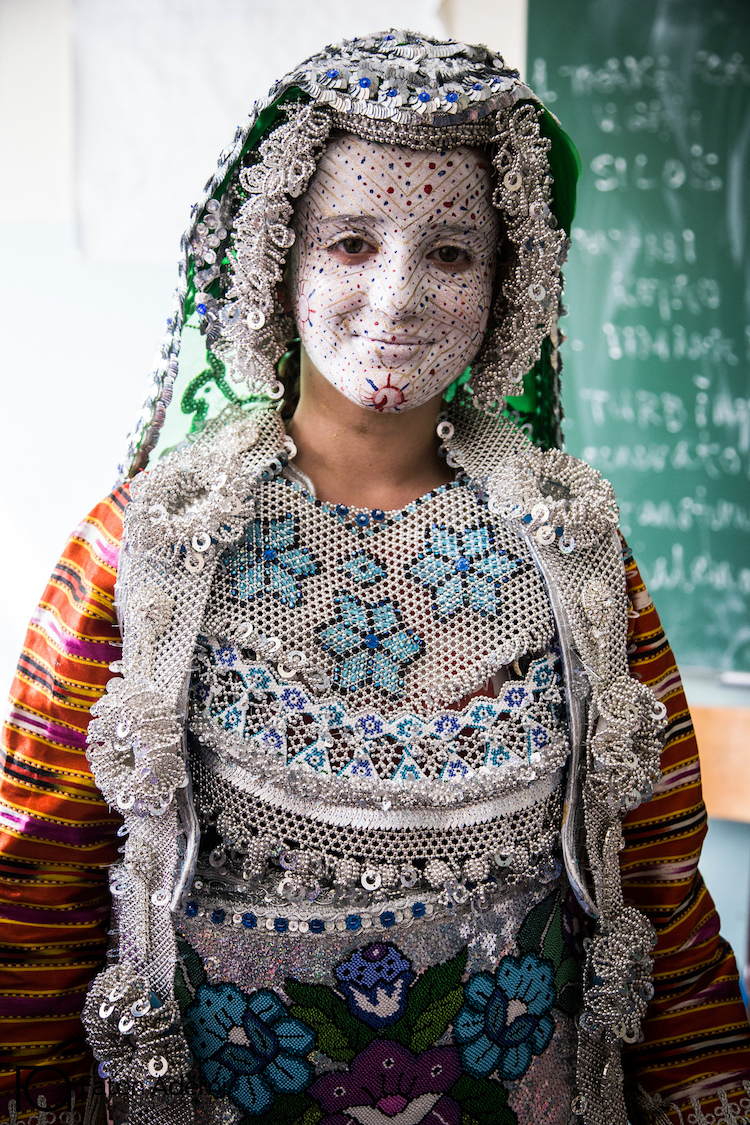
The nomadic Gorani people, who are Slavic Muslims, used to spend an entire week to celebrate a wedding, but now it’s said to last only about 3 days. In that time, various traditional celebrations that revolve around “ethnic identity.”
Mongolia
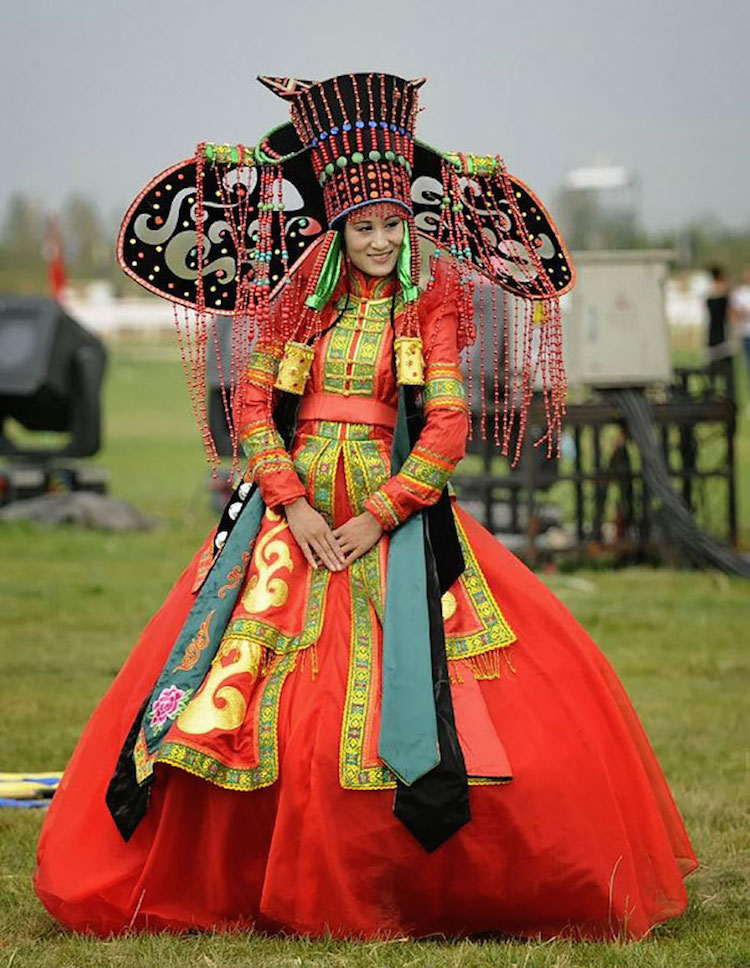
Brides and grooms in traditional Mongolian weddings wear what’s called a “deel.” Though there are deels for everyday wear, these custom garbs, worn since centuries ago, are typically reserved for weddings and holidays.
